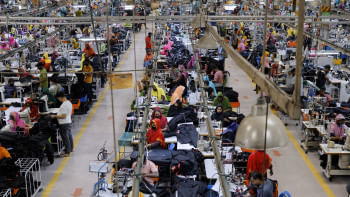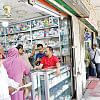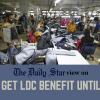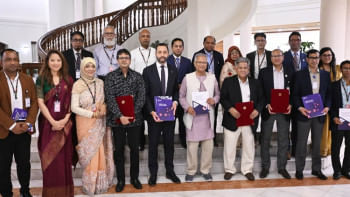Post-LDC challenges and the future of Bangladesh's exports

As Bangladesh approaches its graduation from the Least Developed Country (LDC) category, the anticipated challenges of losing preferential trade benefits are already manifesting. The United States has recently imposed a 37 percent reciprocal tariff on imports from Bangladesh, which is a significant blow to the latter's exports. Though the tariff's execution has been temporarily put on hold, if not resolved in time, this sudden increase threatens to erode the country's competitiveness in its largest export destination.
Concurrently, India has withdrawn the transshipment facility that previously allowed Bangladeshi exports to third countries via Indian ports and airports. This decision, which the Indian authorities claim is aimed at alleviating congestion and costs in India's own export channels, is expected to disrupt Bangladesh's export logistics, particularly affecting shipments to some countries. These developments underscore the urgent need for Bangladesh to diversify its export portfolio, invest in infrastructure development, revisit the trade architecture, and engage in strategic trade negotiations to mitigate the impacts of its LDC graduation.
The path ahead is becoming clearer, and more complicated. While diversification has long been a talking point, it is now a matter of survival. Relying on the export of ready-made garment (RMG) products alone is no longer an option. Bangladesh must invest in building up sectors that have already shown early signs of promise. Pharmaceuticals, ICT, and agro-processing are no longer fringe players. They are contenders, capable of anchoring the next chapter of the country's export story. Take pharmaceuticals, for instance. The world's appetite for generic medicine continues to grow, and Bangladesh has both the factories and the know-how to meet that demand. The transition from the LDC status could actually open the door for producing patented drugs, a game-changer if handled right.
But shifting what we sell is only half the equation. Where we sell must change too. For years, Bangladesh's export playbook has read like a short list: the European Union, the US, Canada—dependable, but limited. The world is bigger than that. Africa, South America, the Middle East and even some large economies in Asia are waking up as consumer markets. These are regions with rising demand, growing populations, and very few Bangladeshi products on their shelves. Cracking these markets will not be easy. It will mean understanding local tastes, building smarter logistics, and pricing with precision. But the opportunity is real, and the timing has never been better.
The other force reshaping competitiveness is less visible but equally powerful: technology. Automation, artificial intelligence, and real-time data have changed how factories run and decisions are made. In Bangladesh, these tools have been met with some hesitation, and understandably so. Fear of job losses is not unfounded. But the truth is, technology can enhance jobs as much as it replaces them. A sewing machine operator can become a line technician. A production supervisor can become a systems analyst. What is needed is training—not just any training, but programmes that are fast, focused, and aligned with the real industry needs. If done right, automation does not hollow out the workforce; rather it strengthens it.
None of this will matter, though, if the product gets stuck at port. Bangladesh has an infrastructure problem, which has been dragging down competitiveness for years. Roads get clogged too easily, customs clearances move too slowly, and ports often lag behind demand. The result is cost: exporters lose both money and time. According to the World Bank, logistics eat up nearly one-fifth of export costs in Bangladesh. That is double what many of our competitors face. Fixing this will take more than patchwork solutions. It will require a systemic overhaul—faster customs, smarter ports, and better roads—because the supply chain has to move as fast as the market it serves.
As the world grows more demanding, compliance is no longer a choice. It is the ticket to staying in the game. Product safety, labour rights, and environmental responsibility are the new benchmarks. Global buyers want transparency, certifications, traceability, and proof that what they are sourcing is ethical. This means companies must invest in more than just machines. They must invest in processes that show compliance and in people who can manage it. The government must play a part in this as well. Streamlined standards, quicker approvals, and constant engagement with exporters will make the difference between staying competitive and falling behind.
Trade diplomacy, once a quiet background act, now needs a front-row seat. The era of simply receiving trade perks is ending. Bangladesh must learn to negotiate on its own terms. It will not be easy, but the playbook is out there. Vietnam, with its network of deals stretching from Europe to Asia, has shown what is possible when trade is treated as strategy. Bangladesh has the size, the location, and the market to cut its own deals; what it needs now is the will to execute.
Sustainability, once seen as a luxury, is fast becoming a business requirement. Major retailers are making it clear: green practices are no longer treated as an add-on. And Bangladesh, surprisingly, is already ahead of the curve. The country is home to the largest number of certified green RMG factories in the world, which gives us a competitive edge. The next step is to scale that success and make it visible to the global consumer. Sustainability should not just be part of the story. It should be THE story.
The choices Bangladesh makes in the next few years will define the next few decades. Graduation from the LDC status is not the end of the journey, but the beginning of a harder one. A journey that will test the depth of strategy, the speed of execution, and the strength of collective will. But as history has shown, Bangladesh has never lacked resolve. The real question now is whether it can turn that resolve into reinvention.
Mamun Rashid, an economic analyst, is chairman at Financial Excellence Ltd and founding managing partner of PwC Bangladesh.
Views expressed in this article are the author's own.
Follow The Daily Star Opinion on Facebook for the latest opinions, commentaries and analyses by experts and professionals. To contribute your article or letter to The Daily Star Opinion, see our guidelines for submission.

 For all latest news, follow The Daily Star's Google News channel.
For all latest news, follow The Daily Star's Google News channel. 










Comments